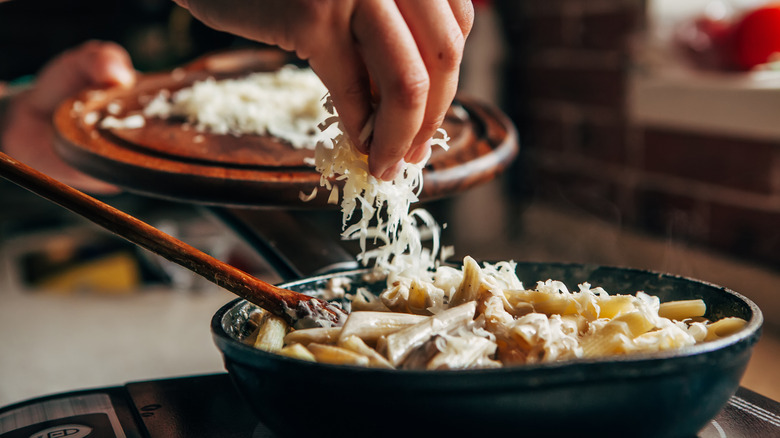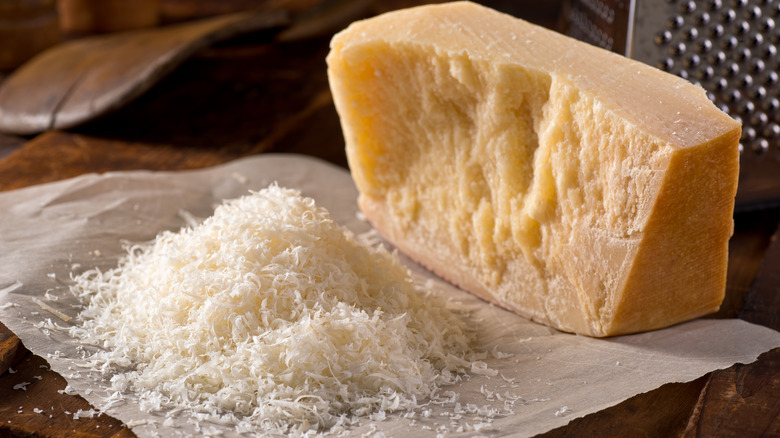Giada De Laurentiis' Pro-Tip For Tossing Cheesy Pasta
Whether it's a classic recipe like cacio e pepe or a fresh new take like white pesto, Giada De Laurentiis is certainly no stranger to deliciously cheesy pasta. And regardless of whether cheese is the star of the show or simply an accompaniment, more often than not, the chef's pasta dishes call for a generous portion of freshly grated Parmigiano-Reggiano to bring everything together.
Known for the go-to pasta cooking tips that she often provides her viewers and fans, De Laurentiis naturally has a pro tip up her sleeve for tossing cheesy pasta. Per usual, it's a small trick that's very simple to execute, yet it makes a big difference.
The secret to the ultimate cheesy tossed pasta? According to De Laurentiis, it's all in the order: She likes to grate parmesan cheese onto her pasta before she tosses it in its sauce, not after. That way, it becomes infused into the entire dish, helping the sauce to stick to the pasta.
Heat, grate, toss
There's a specific order of events that De Laurentiis swears by to make the most of the cheese toss that will finish off your pasta. The first step is to heat your sauce. Whatever the sauce happens to be, allow it to warm up in a skillet before adding your pasta to it, so that it's primed to evenly disperse and coat the noodles.
Next comes the cheese grating. Rather than wait until your pasta is assembled to grate the parmesan cheese on top, add the grated cheese before you even toss the pasta in its sauce. As De Laurentiis explains in a cooking video for Williams Sonoma, this is a Neopolitan way of making pasta that she learned from her grandfather.
By first allowing the cheese to melt onto the pasta, you create a sticky coating that will make the dish even more delicious once you toss it all together. "That way," De Laurentiis says, "the sauce sticks to the cheese that sticks to the pasta." The end result? An extra creamy, silky, cheesy mixture that makes every bite beautiful.
The best cheese for the job
Most of Giada De Laurentiis's recipes call for freshly grated Parmigiano-Reggiano — you'll notice that it's not pre-grated cheese, and it's not parmesan cheese. So why does the distinction matter, and what exactly is the difference?
Parmigiano-Reggiano is true Italian parmesan cheese. It only comes from the cows of the Emilia-Romagna region of Italy, it'll have a signature rind, and it's aged for at least a year (but often much longer). When you see something labeled parmesan cheese, on the other hand, it's essentially the American version — which comes from domestic cows. Parmigiano-Reggiano is more expensive, but also richer, nuttier, more flavorful, and better for finishing a dish.
There's also a difference between using pre-packaged grated cheese and freshly grating the cheese yourself. The pre-grated cheese you buy at the grocery store will be dryer, and once it's grated it begins to lose some of its flavor. So freshly grating your cheese from a block will give you a tastier, fresher, finish.



